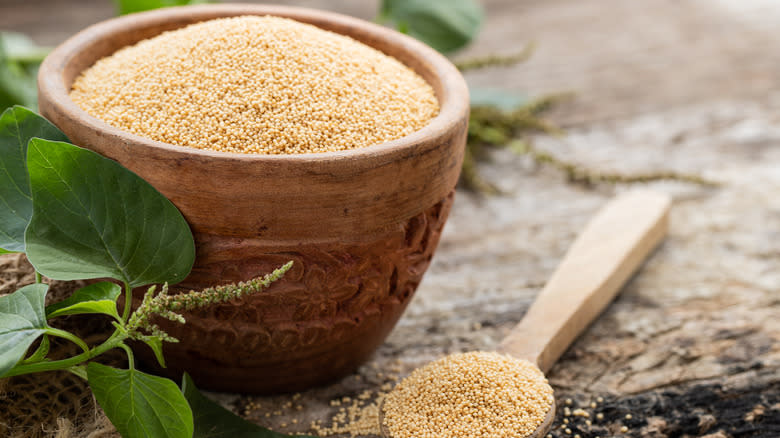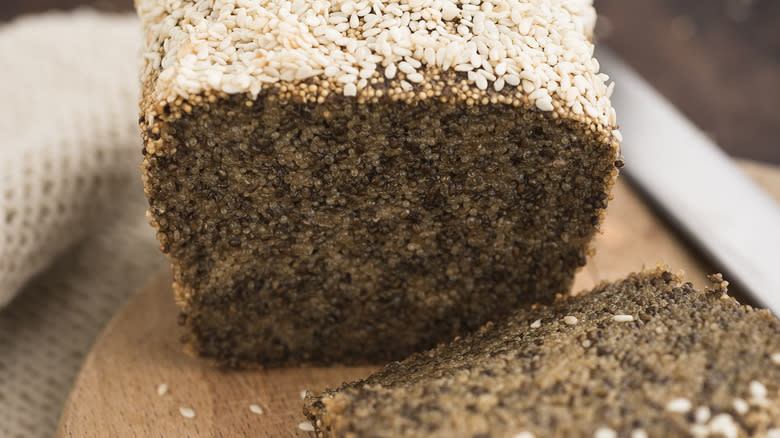To Elevate Nutty Flavors In Baked Goods, Turn To Amaranth Flour

Nuts are a classic addition to baked goods, from muffins to carrot cake to breakfast breads. The best way to elevate nutty flavors in baked goods isn't just to add more nuts but to use a type of baking flour with nutty undertones. Amaranth flour is the secret weapon you need to enhance the flavor of added nuts while also imparting a nuttiness to the batter as a whole.
Amaranth is a Mexican crop and is considered both an ancient grain and a superfood, containing a complete profile of amino acids and a wealth of vitamins and minerals. While it may be used as a grain in cooking, Amaranth is actually a seed, which accounts for its nutty flavor and high protein content. While Mexicans use amaranth flour to elaborate unleavened breads like tortillas, its utility as a leavened bake good ingredient is equally successful.
You can add amaranth flour to your next baking project — whether it's bread, cake, or crackers — to create a rich and nutritious foundation and a nutty flavor profile. Amaranth is a gluten-free grain and can make the perfect substitute for wheat, spelt, or barley flour. You can find amaranth flour sold in the gluten-free or baking aisle of grocery stores, or you can order it online from brands like Bob's Redmill.
Read more: 30 Healthy Snack Ideas That Won't Ruin Your Diet
Tips For Using Amaranth Flour In Baked Goods

Despite its styrofoam-like consistency as an edible seed, Amaranth flour results in a dense bread or cake crumb after baking. It's thus best to use Amaranth flour in conjunction with lighter flour. Experienced bakers recommend using one part Amaranth flour to four parts wheat flour. If you want to keep your baked goods gluten-free, you could use a blend of Amaranth, almond, and chickpea flour, which will amplify the nuttiness of your batter. For an ode to American super-grains, you can use a blend of Amaranth and quinoa flour.
One of the most famous uses of Amaranth in Mexico is the honey-soaked, rice-crispy treat doppelganger barra de alegrías, a chewy bar consisting of amaranth seeds dotted with pepitas, peanuts, dried fruit, and sesame seeds. This recipe would translate perfectly into an amaranth-flour fruit cake. Because fruit cakes are famous for their density, you won't have to blend amaranth flour with another type of flour to prevent an overly dense consistency.
If you're not a dense fruitcake fan, you can still apply the same flavor profile to a sweet bread or tea cake using a mixture of Amaranth, almond, and wheat flour sweetened or soaked in honey and filled with dried cranberries and toasted pecans. You can top Amaranth baked goods with whole toasted Amaranth seeds as a crunchy and nutty introduction to a soft, rich slice of Amaranth bread or tea cake.
Read the original article on Tasting Table.

